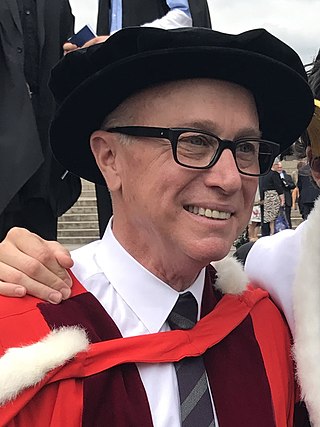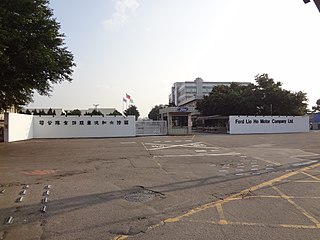The Ford MA Concept concept car was a 2002 minimalist design exercise drawn by Jose Paris and championed by Ford's VP of design J. Mays. It was exhibited as an art object in museums as well as a traditional concept car in auto shows. It received an IDSA Silver Industrial Design Excellence Award in 2003.
The MA displayed many unusual automotive practices. It had the shape of a low slung two seat roadster with no top, but it was powered by an electric motor. The design was flexible enough, though, to accommodate a small internal combustion engine.
Very few of the parts were painted and there were none of the usual hydraulic fluids or industrial adhesives common in most cars, making it 96% recyclable.
It was designed to be assembled and disassembled easily with a minimal amount of equipment. There were no welds holding it together: Instead, its 500 or so pieces of bamboo, aluminum and carbon fibre were held together with 364 titanium bolts. The total weight was said to be 900 pounds (410 kg).
Some automotive columnists have presented the Ford MA as the forerunner to a small series kit car, much like the Lotus Seven. Others have called it an IKEA-mobile.

Anthony Colin Bruce Chapman was an English design engineer, inventor, and builder in the automotive industry, and founder of Lotus Cars.

Personal luxury car is a North American car classification describing somewhat sporty, sophisticated mass-market coupés that emphasized comfort over performance. The North American manufacturers most often combined engineering, design, and marketing to develop upscale, distinctive "platform sharing" models that became highly profitable.
Virgil Max "Ex" Exner Sr. was an automobile designer for several American automobile companies, most notably Chrysler and Studebaker.

The Ford Piquette Avenue Plant is a former factory located within the Milwaukee Junction area of Detroit, Michigan, in the United States. Built in 1904, it was the second center of automobile production for the Ford Motor Company, after the Ford Mack Avenue Plant. At the Piquette Avenue Plant, the company created and first produced the Ford Model T, the car credited with initiating the mass use of automobiles in the United States. Prior to the Model T, several other car models were assembled at the factory. Early experiments using a moving assembly line to make cars were also conducted there. It was also the first factory where more than 100 cars were assembled in one day. While it was headquartered at the Piquette Avenue Plant, Ford Motor Company became the biggest U.S.-based automaker, and it would remain so until the mid-1920s. The factory was used by the company until 1910, when its car production activity was relocated to the new, bigger Highland Park Ford Plant.

J Mays is a retired American industrial designer who served as Group Vice President of Global Design and Chief Creative Officer at Ford Motor Company, and was Chief Design Officer at Whirlpool. His name is simply "J", after his grandfather, S J Mays.
Freeman Thomas is an American automobile and industrial designer who has worked for Porsche, Volkswagen Group, DaimlerChrysler and Ford.

Automotive design is the process of developing the appearance of motor vehicles, including automobiles, motorcycles, trucks, buses, coaches, and vans.

Richard Arthur Teague was an American industrial designer in the North American automotive industry. He held automotive design positions at General Motors, Packard, and Chrysler before becoming Vice President of Design for American Motors Corporation (AMC), and designed several notable show cars and production vehicles including AMC's Pacer, Gremlin, and Hornet models, as well as the Jeep Cherokee XJ and either designed or assisted in the designing of later cars for Chrysler such as the Jeep Grand Cherokee and Neon after American Motors' buyout.

Ford Lio Ho Motor is a Taiwanese-based automaker and the primary dealer of Ford vehicles in Taiwan, formed in 1972. It is 70 percent owned by Ford Motor Company. The remaining 30 per cent is owned by investors in the former Lio Ho Automotive Industrial Corporation, which previously assembled Toyota vehicles.

The Rambler Tarpon was a concept car, a compact-sized sporty youth-oriented 2+2 hardtop coupé developed in 1963 by American Motors Corporation (AMC). The bright red with black roof design study made its public debut 1964 Chicago Auto Show and served to foretell the fastback design elements of the larger Rambler Marlin that was introduced in 1965.

The Ford Mustang I is a small, mid-engined (4-cylinder), open two-seater concept car with aluminium body work that was built by Ford in 1962. Although it shared few design elements with the final production vehicle, it did lend its name to the line.
Alexander Sarantos Tremulis was a Greek-American industrial designer in the North American automotive industry. Tremulis held automotive design positions at Cord Automobile, Duesenberg, General Motors, Tucker Car Corporation and Ford Motor Company before establishing a consulting firm.
Karl E. Ludvigsen is a journalist, author, and historian of the automotive industry and motor sports.

The Ford 021C was a concept car first shown to the public at the October 1999 Tokyo Motor Show by Ford. It was designed by Marc Newson and built by Ghia. The car's name is taken from the Pantone orange colour, said to be Newson's favorite, although it was repainted in lime green when it was brought to the Milan Furniture Fair in April 2000. Ford officials stated that 021C also stands for "21st Century." It was produced purely as a styling exercise and was not intended for production.
This article provides an overview of the automotive industry in countries around the world.
Lowie Vermeersch is a Flemish designer, part of the third generation of a prominent artistic family. He is the Founder & Creative Director of Granstudio in Turin, Italy.

As of 2019, the automotive industry in Thailand is the largest in Southeast Asia and the 10th largest in the world. The Thai industry has an annual output of more than two million vehicles, more than countries such as Belgium, Canada, the United Kingdom, Italy, Czech Republic and Turkey.

Abbey Panels Ltd., originally The Abbey Panel & Sheet Metal Co. Ltd., was a Warwickshire-based coachbuilding company founded on Abbey Road, Nuneaton in 1941, initially assembling Supermarine Spitfires for the ongoing war effort. The original partners were Edward Loades, Les Bean, Bill Woodhall and Ernie Wilkinson. As the business grew they expanded to Old Church Road, Coventry before having their main manufacturing plant on the well known Bayton Road Industrial Estate in Exhall. In 1967, Ted Loades listed the business on the London Stock Exchange (LSE) and it became known as Loades PLC, with Abbey Panels its main brand, alongside Albany Zinc (castings), Loades Dynamics (machining) and Loades Design . The company specialised in producing handmade prototype car bodies and did so for many notable car companies including: Bristol Cars, Lea Francis, Jaguar Cars, Rover, MG, Healey, Rolls-Royce, Buick, Lincoln, Volvo and BMW amongst others. They fashioned the bodywork of cars such as the Le Mans winning Ford GT40, numerous Jaguars, the original Mark I Land Rover Station Wagon, Jim Clark's Lotus 38 and Stirling Moss's 1957 Pescara Grand Prix winning Vanwall. They also produced many specialist parts for the aerospace industry, particularly for Rolls-Royce plc, such as the Rolls-Royce Pegasus engine duct of the Harrier jump jet.
John Manoogian II is an industrial designer, adjunct faculty member, automotive industry expert and automobile designer — widely known for his nearly 33-year career with General Motors, where he designed for the company's Chevrolet, Pontiac, Saturn, Buick, Oldsmobile and Cadillac divisions.











